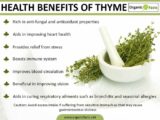
chives - salads, chicken, soups, cheese dishes, egg dishes, mayonnaise, vinaigrettes. chilli - meat, chicken and poultry, shellfish, tomato dishes, curries. bay leaves - soups, stews, casseroles, meat and poultry marinades, stocks. basil - pesto, tomato sauce, tomato soup, tomato juice, potato dishes, prawns, meat, chicken and poultry, pasta, rice, egg dishes, strawberries. Here are some traditional pairings to get you started: There are unlimited ways to use herbs in your cooking. For example, spaghetti Bolognese with some fresh basil leaves on top or a pumpkin or chicken dish with fresh sage leaves. They don’t always have to be added into a dish either - herbs added once a dish has been served is another great way of enhancing the flavour, smell and visual appeal of your dish. You are only limited by your imagination with it comes to using herbs in the kitchen - they can be added to virtually any recipe. If you are using herbs in order to harness their health-promoting aspects first and foremost, aim to add your fresh herbs at the end of cooking or as you serve to preserve these properties. Herbs are rich in antioxidants, especially cloves, cinnamon, sage, oregano and thyme, by helping to reduce low-density lipoproteins (‘bad’ cholesterol).įresh herbs often contain higher antioxidant levels compared to processed or dried herbs. Garlic, onions, chives, leeks, mint, basil, oregano, sage and many other herbs can help protect against cancer. Fenugreek can help control blood sugar and insulin activity (as can linseed, flaxseed and cinnamon). Garlic is useful for people with mildly elevated blood pressure. Garlic, linseed, fenugreek and lemongrass may help lower cholesterol. Research is ongoing but studies have shown that: It may also help to reduce blood clots and provide anti-inflammatory and anti-tumour properties. Health benefits of herbsĬonsuming herbs may help to prevent and manage heart disease, cancer and diabetes. If not enough herbs are used, then little difference will be made to the flavour of the dish, but if too many herbs are added, their flavour will overpower other ingredients. Tasting your dish as you go along will help you tell if you’ve added enough. 
Generally, fresh herbs are delicately flavoured, so if adding them to your cooking, do so in the last few minutes. In addition to flavour and colour, they each also tend to have their own set of health-promoting properties. Herbs are a fantastic way to add flavour and colour to any sort of dish or drink, whether sweet or savoury, without adding fat, salt or sugars.

These include, for example, barks (cinnamon), berries (peppercorns), seeds (cumin), roots (turmeric), flowers (chamomile), buds (cloves) and stigmas of flowers (saffron).
#Never enough thyme nutrition full#
I like growing lettuce and herbs in part-sun situations because they take longer to flower than in full sun.Herbs are the leaf part of a plant that is used in cooking - these can be used fresh or dried.Īny other part of the plant, which is usually dried, is referred to as a spice. Oregano to the lower right, sorrel in protective cage to the upper right, super invasive lemon drops to the left - I cannot eradicate those things! This is a part-sun location fairly close to our large elm tree in front of our house. I took this one out, and the leaves are drying right now in my super sophisticated herb drying system. Fortunately new thyme plants are very inexpensive. See all those woody stems with no leaves? This thyme was past its prime. Our main thyme plant was at least 3 years old this spring, and starting to look a bit ratty: It’s true that thyme is a perennial, but it’s a short-lived one. I’ve written about home-grown thyme’s superiority to store-bought, and also showed you how we dry it. There was even a restaurant in southwest Minneapolis for a few years called “Never Enough Thyme” - and it’s true. It tastes great in nearly everything, and is featured in many different regional cuisines. It’s a perennial even here in the northland.


If you’re not growing thyme, well, you’re really missing out.








 0 kommentar(er)
0 kommentar(er)
